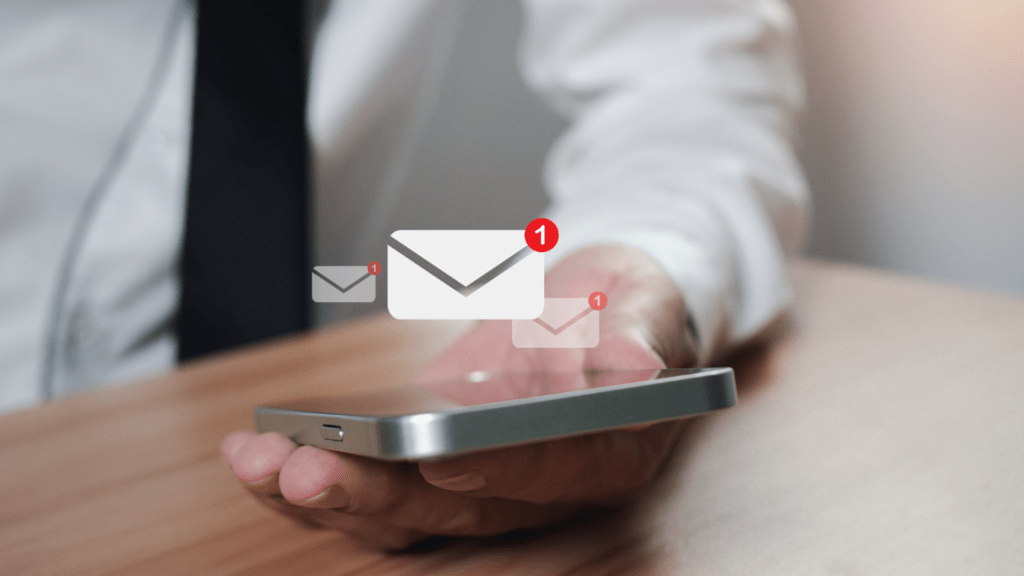Understanding the Lead Generation Funnel
A lead generation funnel is essential in turning prospects into loyal customers. It involves several stages that guide potential leads from initial interest to final conversion. Each stage requires specific strategies to optimize engagement and conversion rates.
Awareness Stage
In the awareness stage, potential leads first encounter my brand. Here, I focus on attracting attention and generating interest through content marketing efforts such as blogs, social media, and SEO. Educational materials like eBooks and webinars also help in establishing authority.
Consideration Stage
The consideration stage is where leads evaluate my solutions. I provide detailed product information, case studies, and customer testimonials during this stage. Offering free trials or demos can also encourage leads to explore my offerings further.
Decision Stage
In the decision stage, prospects decide whether to purchase. I utilize clear, compelling calls-to-action to guide them. Personalized communication such as email follow-ups and special offers can incentivize this final step, increasing the likelihood of conversion.
Post-Conversion Stage
After conversion, nurturing doesn’t stop. I ensure continued engagement by offering excellent customer support, seeking feedback, and providing additional resources. Satisfied customers are more likely to become repeat buyers and advocates for my brand.
Identifying Your Target Audience
Recognizing who your ideal customer is can transform your lead generation funnel. Segmenting the audience ensures that messages resonate effectively. Analyzing current customer data is an efficient first step. Use customer relationship management (CRM) systems to pinpoint demographics, behaviors, and preferences.
Creating buyer personas helps visualize and understand target customers. These fictional characters represent key segments within the broader audience. Include specific details such as age, job role, challenges, and goals.
Conducting market research provides insights into the broader market landscape. Surveys and focus groups reveal pain points and preferences. Online tools like Google Analytics and social media insights offer valuable data on visitor behavior.
Evaluating competitor strategies helps refine your approach. Identify who they target, how they engage, and what gaps you can exploit. Tracking their marketing tactics using tools like SEMrush and Ahrefs blankets this process efficiently.
Adapting your marketing messages to align with the audience’s language and tone aids in connecting directly with them. Consider using A/B testing to gauge which messages resonate best. This structured approach optimizes your communication strategy continuously.
Aligning content with specific customer needs nurtures leads through the funnel stages effectively. Providing tailored solutions at each touchpoint strengthens engagement, leading to higher conversion rates. Using these methods enhances the precision and efficacy of your lead generation efforts.
Creating Compelling Content
Creating compelling content is essential for attracting and engaging leads at each stage of the funnel. High-quality content not only drives awareness but also nurtures interest and guides potential customers toward a purchase.
Types of Content
Producing various types of content ensures I address diverse preferences and capture a broader audience. Examples include:
- Blog Posts: Share insights, tips, and industry trends to establish thought leadership.
- eBooks and Whitepapers: Offer in-depth exploration of topics, providing valuable information that encourages downloads.
- Case Studies: Highlight real-world success stories, demonstrating the effectiveness of my products or services.
- Infographics: Present data and statistics visually to simplify complex information and boost shareability.
- Videos: Create product demos, interviews, and tutorials to capture attention and enhance engagement.
- Webinars: Host live or recorded sessions to interact with the audience and address their questions in real-time.
- Social Media Posts: Share short, engaging content to build brand awareness and drive traffic to my website.
Content Distribution Channels

Effective content distribution ensures my content reaches the right audience. I use multiple channels to maximize visibility:
- Email Marketing: Send personalized emails with targeted content to nurture leads and keep them engaged.
- Social Media: Leverage platforms like LinkedIn, Twitter, and Facebook to share content and interact with followers.
- SEO: Optimize website content for search engines to increase organic traffic.
- Paid Advertising: Use PPC campaigns and social media ads to promote content to a wider audience.
- Content Syndication: Partner with industry websites and platforms to republish my content and expand reach.
- Influencer Collaboration: Work with influencers to share my content with their followers, boosting credibility and exposure.
- Guest Posting: Write articles for other blogs and sites to attract their readership and drive traffic back to my site.
Combining varied types of content with strategic distribution channels enhances my ability to generate quality leads and guide them through the funnel.
Optimizing Landing Pages
A well-optimized landing page is crucial for improving lead generation. To maximize conversion rates, focus on these two key areas.
Design Tips
An effective landing page design captures attention immediately. First, minimize distractions by keeping the layout clean and simple. Use ample white space to make content easily readable. Second, ensure mobile optimization as a significant portion of visitors browse using smartphones. Third, use high-quality images or videos that resonate with your target audience. Metrics from HubSpot indicate that landing pages with visuals have a 65% higher conversion rate. Fourth, implement a clear and compelling headline that conveys the value proposition instantly. Lastly, position the most critical elements like the call-to-action (CTA) above the fold, ensuring they’re visible without scrolling.
Call-to-Action Strategies
Call-to-action (CTA) elements guide visitors towards conversion. Start by using action-oriented language, for example, “Get Your Free Ebook” instead of “Submit”. Split test (A/B test) different CTAs to find the phrasing that resonates most with your audience. Place CTAs strategically throughout the page but avoid overwhelming visitors. Ensure the CTA stands out with contrasting colors and is above the fold. Finally, create a sense of urgency using phrases like “Limited Time Offer” to encourage immediate action. According to Marketing Experiments, the right CTA can improve conversion rates by 30%.
Leveraging Email Marketing
Email marketing plays a pivotal role in improving lead generation by offering personalized communication and nurturing prospective clients throughout the funnel.
Building an Email List
Building a solid email list starts with offering value. I capture emails by using opt-in forms on landing pages, offering lead magnets like eBooks, whitepapers, and exclusive webinars. Carefully placing these forms across website pages, blog posts, and checkout processes increases visibility. I also use social media call-outs and collaborations with influencers to expand my email list. Maintaining list hygiene by regularly removing inactive subscribers enhances engagement rates.
Crafting Effective Email Campaigns
Crafting effective email campaigns involves segmentation and personalization. I segment my list based on demographics, behaviors, and past interactions, allowing tailored content delivery. Writing compelling subject lines grabs attention while concise, actionable content sustains it. I include clear calls-to-action (CTAs) to drive conversions. Utilizing A/B testing for different email elements, like subject lines and CTAs, helps optimize performance. I also track metrics—open rates, click-through rates, and conversions—to continuously refine my approach.
Implementing Lead Scoring and Segmentation
Implementing lead scoring and segmentation can substantially enhance the effectiveness of your lead generation funnel. Lead scoring helps prioritize leads based on their likelihood to convert, while segmentation allows personalized targeting.
Benefits of Lead Scoring
Lead scoring assigns values to leads based on actions taken. This method identifies high-potential leads, ensuring the sales team focuses on those most likely to convert. Companies using lead scoring, according to HubSpot, see a 20% increase in sales productivity. By setting clear criteria such as email opens or website visits, lead scoring reduces wasted efforts on unqualified leads.
Strategies for Effective Segmentation
Effective segmentation involves dividing leads into distinct groups based on various characteristics. Use demographic data like age, location, and job title. Behavioral data, such as browsing history or download frequency, provides deeper insights. According to Mailchimp, segmented campaigns see a 14.31% higher open rate and a 100.95% higher click-through rate compared to non-segmented campaigns. Utilize CRM tools to automate this process, enabling precise targeting and personalized communication.
Using Analytics to Track and Improve Performance
Tracking and improving lead generation performance requires robust analytics. By understanding key metrics and using the right tools, I can enhance the effectiveness of my lead generation funnel.
Key Metrics to Monitor
Focusing on specific metrics helps me gauge the health of my lead generation efforts and pinpoint areas for improvement. Key metrics to monitor include:
- Conversion Rate – Measures the percentage of visitors who become leads or customers. A higher rate indicates effective lead generation tactics.
- Cost Per Lead (CPL) – Indicates the amount spent to acquire a new lead. Lower CPL suggests more efficient strategies.
- Click-Through Rate (CTR) – Shows the effectiveness of my content and CTAs in driving traffic. Higher CTR means better user engagement.
- Lead Quality – Assesses the likelihood of leads converting into customers based on scoring criteria. High-quality leads contribute to better sales outcomes.
- Bounce Rate – Represents the percentage of visitors who leave after viewing one page. Lower bounce rates indicate more engaging landing pages and content.
Tracking these metrics offers insights into the lead generation funnel’s performance and guides adjustments for improvement.
Tools for Analytics
Utilizing the right analytics tools allows me to track and analyze key metrics effectively. Essential tools for lead generation analytics include:
- Google Analytics – Provides comprehensive data on website traffic, user behavior, and conversion rates. It’s crucial for monitoring overall performance.
- HubSpot – Offers robust CRM capabilities with detailed analytics on lead activity, conversion rates, and campaign effectiveness.
- SEMrush – Aids in tracking organic search performance, keyword rankings, and competitive analysis, crucial for optimizing SEO strategies.
- Hotjar – Provides heatmaps and session recordings to understand user interactions, helping to enhance landing page designs.
- Salesforce – A powerful CRM tool for tracking leads, scoring, and segmenting based on behavior and demographics.
Employing these tools equips me with the insights needed to refine my lead generation strategies, ensuring continuous improvement in performance.



